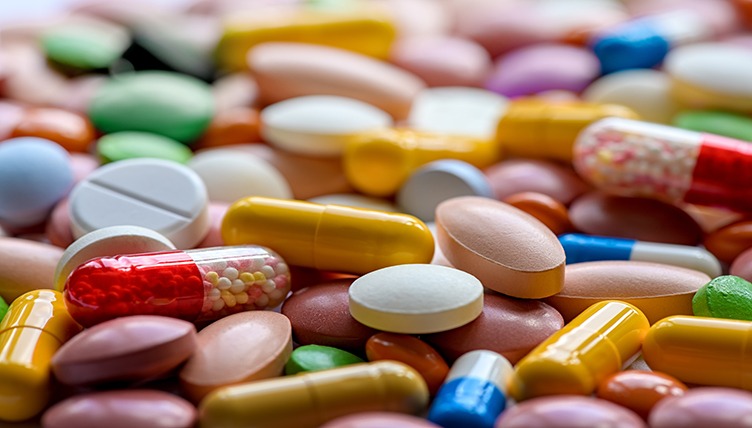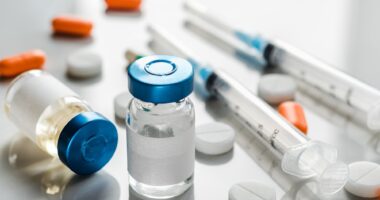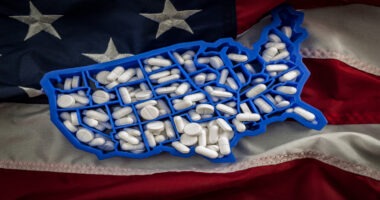Into the Future: 3D Printing and Solid Dosage Drugs
Three-dimensional (3D) printing is an emerging technology across multiple industries, including the bio/pharmaceutical industry. To date, one drug using 3D printing has been approved by the FDA. What’s behind the technology, and what is the potential of 3D printing in manufacturing solid-dosage forms?
3D printing manufacturing technology and drug approvals
The only drug to date approved by the US Food and Drug Administration (FDA) using 3D printing technology is Spritam (levetiracetam), an oral drug for treating seizures caused by epilepsy, by Aprecia Pharmaceuticals, a Blue Ash, Ohio-based company. The drug was approved by the FDA in 2015 and was made using Aprecia’s proprietary ZipDose fast-melt technology platform, which uses 3-D printing to produce a porous formulation that rapidly disintegrates with a sip of liquid. While 3D printing has been used previously to manufacture medical devices, the approval marked the first time a drug product manufactured using 3D printing technology was approved by the FDA.
Aprecia’s ZipDose enables the delivery of high-dose medications in a rapidly disintegrating form, with drug loads up to 1,000 mg in a single dose. Aprecia developed its ZipDose Technology platform by adapting powder liquid 3D printing technology developed at the Massachusetts Institute of Technology. The process involves the use of print fluids to bind layers of active pharmaceutical ingredient (API)-containing powder together into porous structures or dosage forms.
Applications of 3-D printing technology
One of the advantages in using 3D printing technology in fast-melt manufacturing technologies, says the company, is to address the so-called “dose ceiling” above which it becomes difficult to achieve rapid disintegration and acceptable mouth feel. Lower-dose (< 30 mg) products are common in commercially available fast-melt technologies, but the company says precise dose and immediate dispersion for higher doses (> 50 mg) in a fast-melt delivery is more challenging. The 3-D printing technology can also accommodate other properties, such as taste-masking or modified release. Aprecia says its ZipDose technology does not use any direct compression forces during the 3DP manufacturing process and is not subject to the same size limitations as a conventional tablet or capsule due to rapid oral dispersion. Therefore, it is possible to coat or encapsulate drug particles for taste masking purposes or to alter the release characteristics of the product to allow for rapid dispersion along with a modified-release profile. Less limitations on tablet size also means more room to design formulations that contain multiple APIs within the powder blend. Additionally, it is possible to print certain APIs, such as in a fixed-dosed combination product containing multiple APIs, with rapid disperse functionality. In addition to fast-melt properties, the company says the 3D printing technology can be applied to design formulations with enhanced buccal or sublingual absorption or site-specific delivery within the gastrointestinal tract as the technology can be used to control tablet harness and disintegration time by altering the print image and the amount of liquid deposited during a build cycle.
In addition to its ZipDose technology, Aprecia is adding further innovation through “in-cavity” printing, which involves digitally controlled layering of multiple powder streams and printing fluids within predetermined spatial confinement. The company says that in-cavity printing provides several improvements, including: changeover between APIs; prototyping capabilities; better scalability; and increased processed yields. The company says that cavity printing allows for placement of powder and liquid without relying on special materials, which expands opportunities for handling sensitive APIs or engineered particles, and for creating fit-for-purpose systems to process potent APIs. Like open-bed systems, the in-cavity approach is compatible with off-the-shelf excipients and particle-engineering technologies.
Future applications
Aprecia says as it evolves its 3D printing manufacturing systems, equipment assemblies, and processes, it may be possible to develop additional applications for 3D printing technology. By building 3D-printed dosage forms layer-by-layer, it may be possible to incorporate anti-counterfeiting properties, such as the printing of a company mark (e.g., name, brand, etc.) within the inner layers of the dosage form. Additionally, precise control over droplet size and reproducibility from 3D printing manufacturing may enable the printing of drug-loaded fluids onto an excipient powder bed to form (complex) immediate, extended, and multi-release dosage forms and allow for printing drug concentration gradients by controlling droplet size and placement within the microarchitecture of a dosage form. The control and reproducibility of droplet size offered by 3D printing manufacturing may also benefit the development of highly potent products because drug deposited via fluid can provide highly accurate dosing and may offer advantages over handling powders. The 3D printing technology may also be effective in implantable drug-delivery systems by addressing limitations such as batch-to-batch drug variability and excipient blend during implant preparation and inconsistent internal architecture of implants as well as improve drug release in these systems.
Aprecia has formed several partnerships to advance the application of 3D printing for pharmaceuticals. Last month (April 2021), the company formed a collaboration with Nanoform Finland, a Helsinki-based company specializing in nanoparticle medicine development, to explore the synergies between the companies’ respective technologies in the field of nanoparticle-enabled 3D printed dosage forms. The immediate product target for the collaboration is to combine Nanoform’s fast-dissolution nanoformed particles with Aprecia’s ZipDose technology platform for rapid disintegration for buccal and oral delivery of medicines.
In February (February 2021), Aprecia partnered with Glatt Pharmaceutical Services, which develops and produces solid pharmaceutical dosage forms with a focus on multiparticulate systems such as pellets, micropellets and granules. The pact focuses on expanding the use of Glatt’s multiparticulate technologies through Aprecia’s 3D printing technology. In December (December 2020), Aprecia formed a long-term partnership with Battelle, a Columbus, Ohio-based research institute to further explore applications of 3D printing technology for pharmaceuticals.







